With the draw of Manchester City, Schalke 04 awaited a real Herculean task in the Champions League round of 16. However, Schalke sprung a surprise with a good performance. A clever and disciplined defensive approach kept Manchester City away from Schalke’s goal for most parts of the match and left former Barcelona boss Guardiola perplexed. The following analysis will unveil the defensive strategy Schalke coach Domenico Tedesco used to make Manchester City struggle.
Schalke’s formation against Manchester City
Domenico Tedesco deployed a 5-4-1 formation in the first leg against the current Premier League champions. The main idea of Schalke was to use the pace of their wingers in counter-attacking opportunities. In order to avoid their wide forwards being pinned down in their own half, Tedesco lined up a back-five with wing-backs defending the wide areas. This enabled left winger Hamza Mendyl and right winger Weston McKennie to stay higher up the pitch.
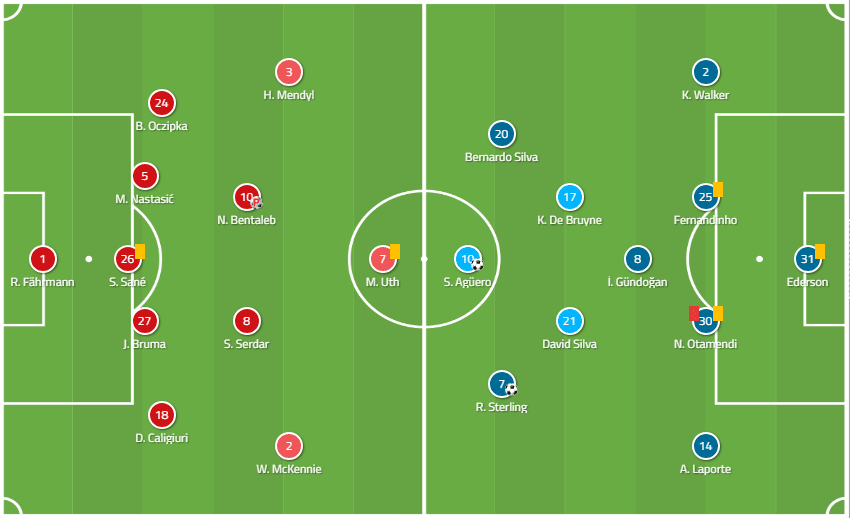
At the back, Tedesco lined up a back five led by the tall and fast centre-back Salif Sané.
Well-structured defence
The 5-4-1 formation of Schalke created a clear allocation of direct opponents. Manchester City used a 3-2-2-3 structure in possession phases. Therewith, they attempted to outnumber the opposition back line with five attacking players. However, Schalke were capable of creating numerical equality with their back five.
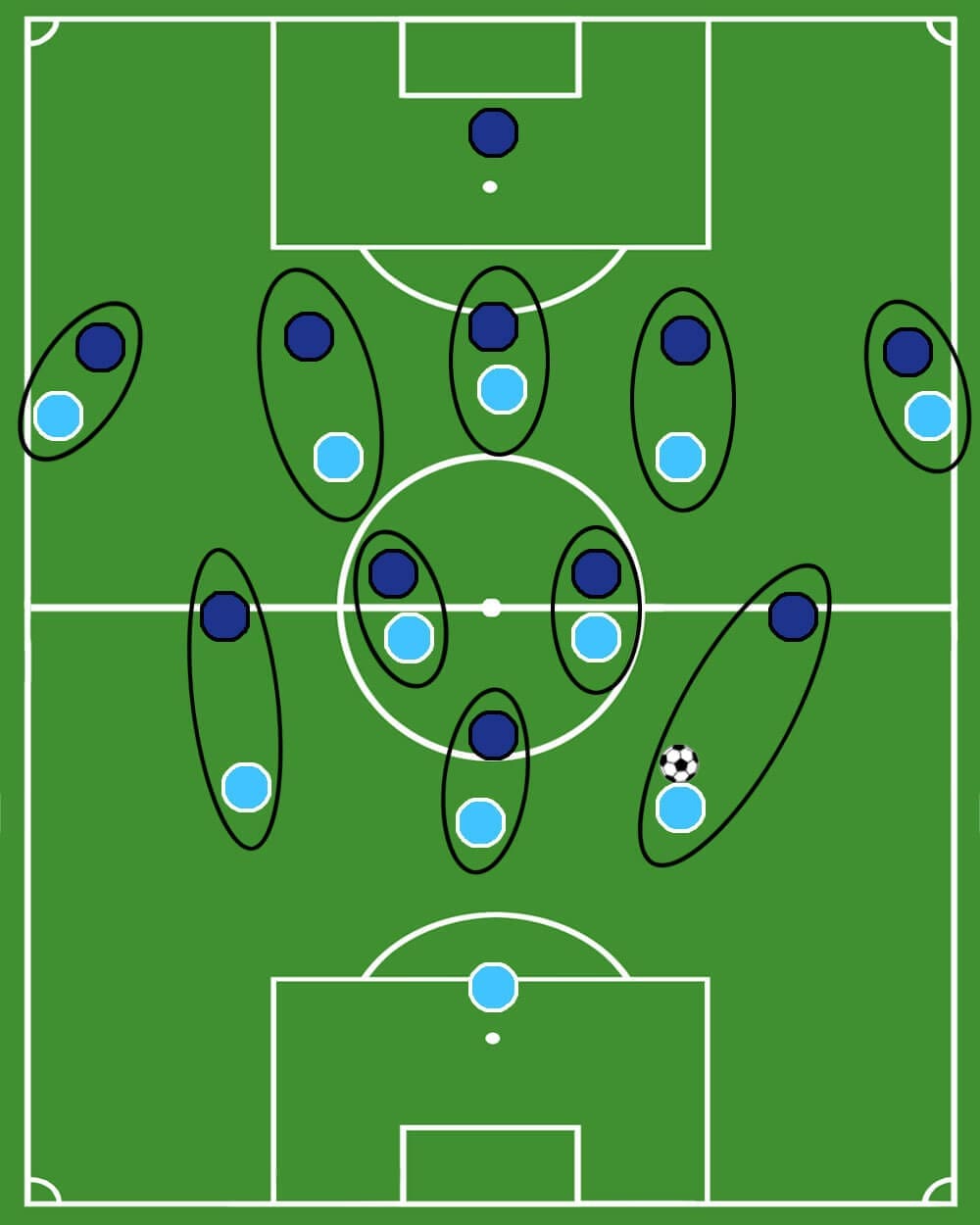
One of the key factors of Schalke’s defence was to stop the opposition midfielders from pulling the strings. The advanced midfielders Kevin De Bruyne and David Silva pose a high risk for any opposition with their quality in creating chances. Nevertheless, Schalke’s back five could prevent Manchester City from creating many scoring opportunities by pressing the dangerous midfielders.
Whenever De Bruyne or David Silva received the ball, either of the three central defenders moved out of the last line to prevent the opposition midfielders from turning. As they were not capable of getting into a position facing the goal, City’s playmakers often had to play passes back.
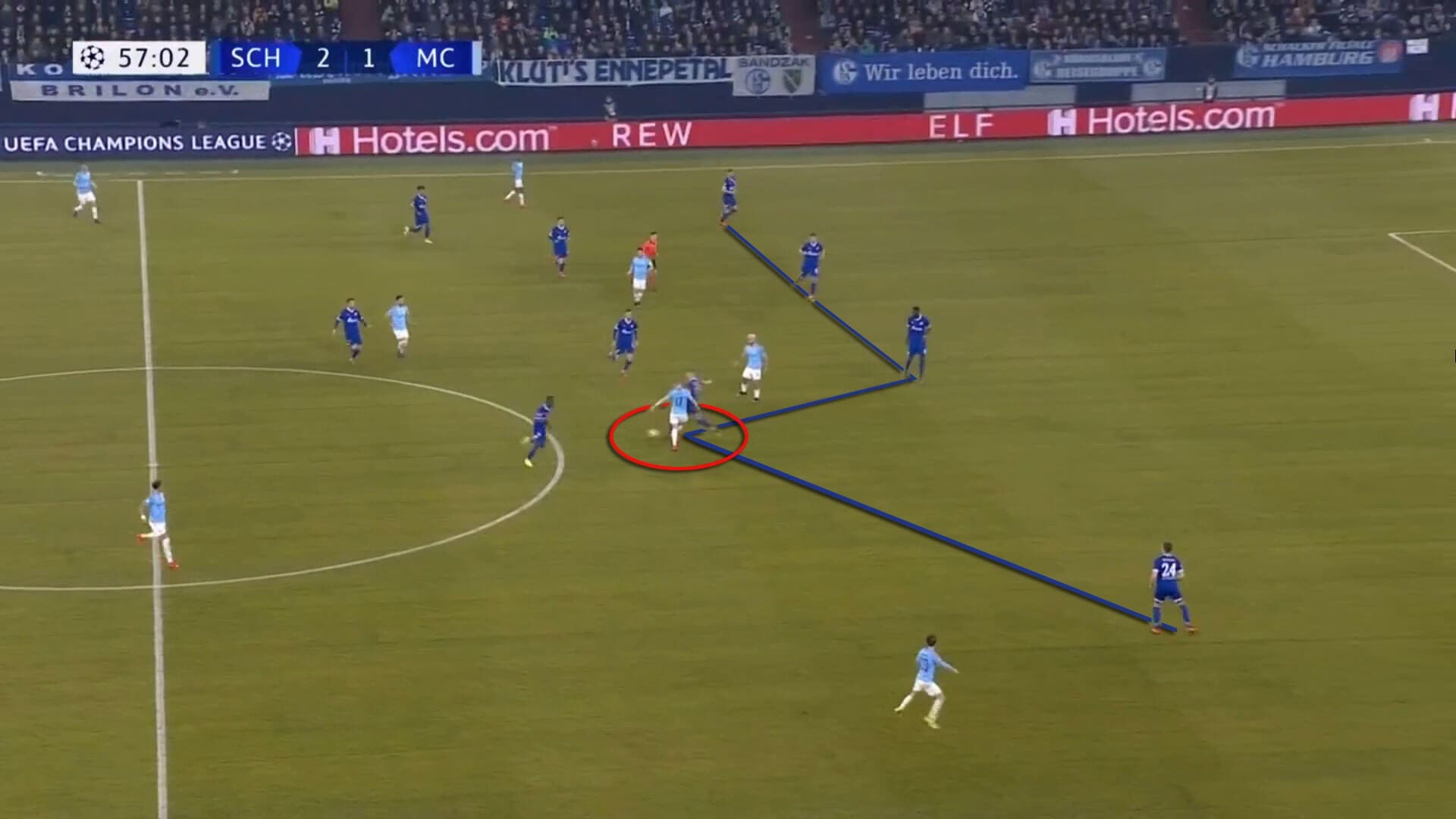
This concept opened up gaps in the back five. But the wingers Raheem Sterling and Bernardo Silva were positioned in wider areas and therefore could not make use of the appearing gaps.
Furthermore, Schalke’s defence managed to quickly get behind the ball upon being overplayed in wide areas. This prevented Manchester City from playing dangerous passes between the central defence and the goal. With the pace of Manchester City’s attackers, this is usually a common strategy of Guardiola’s side.
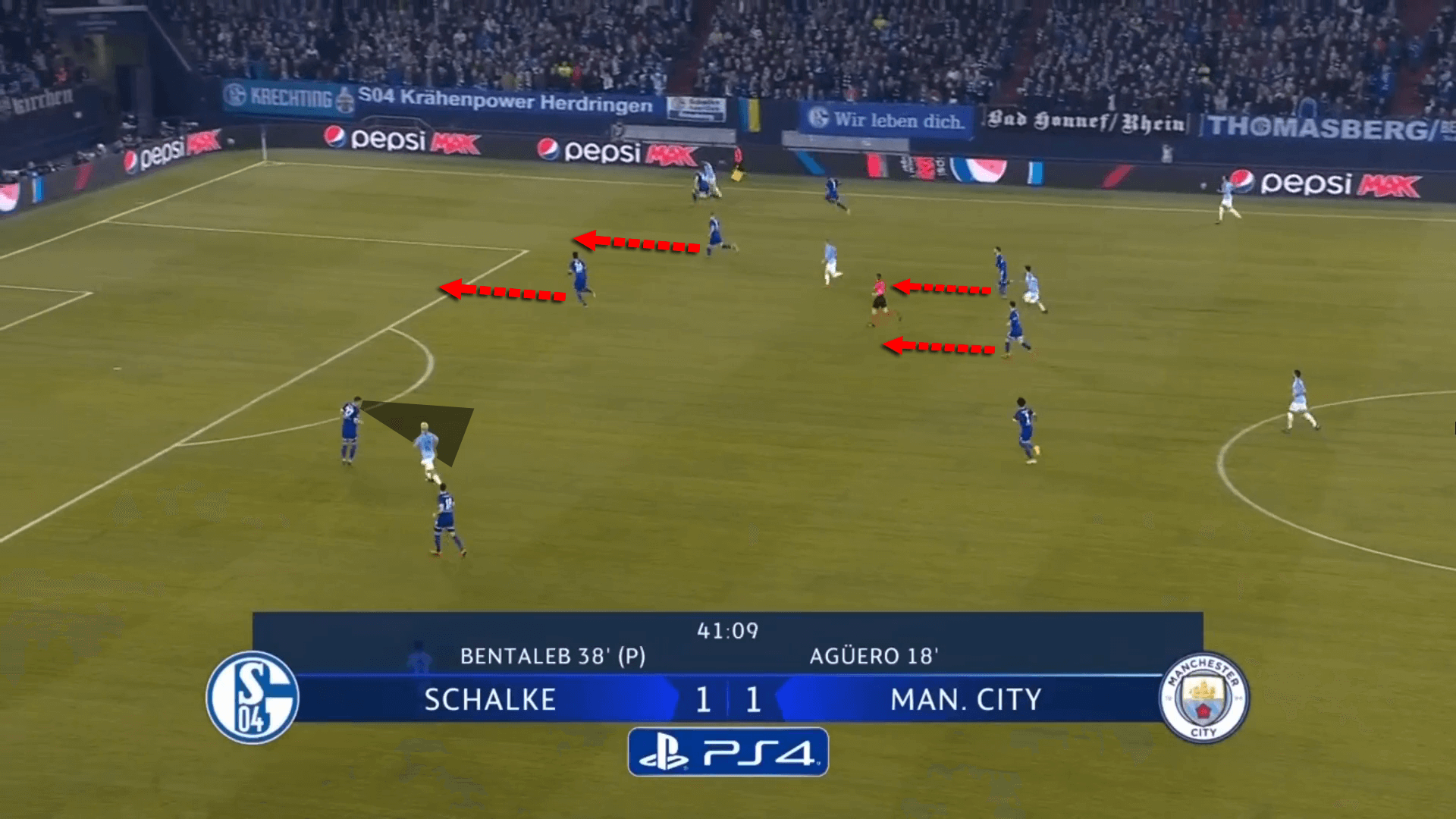
Last but not least, Schalke always attempted to create 2v1 situations against Sterling and Bernardo Silva on the wings. Central midfielder Suat Serdar often helped Daniel Caligiuri on the right side to defend against Sterling. On the other side, left wide forward Hamza Mendyl supported Bastian Oczipka in defence.
Schalke’s issues during possession phases
Despite being well structured in defence, Schalke had some issues during their possession phases. Tedesco’s side were not capable of progressing up the pitch. Schalke created numerical superiority against City’s back four with the wing-backs pushing high up the pitch.
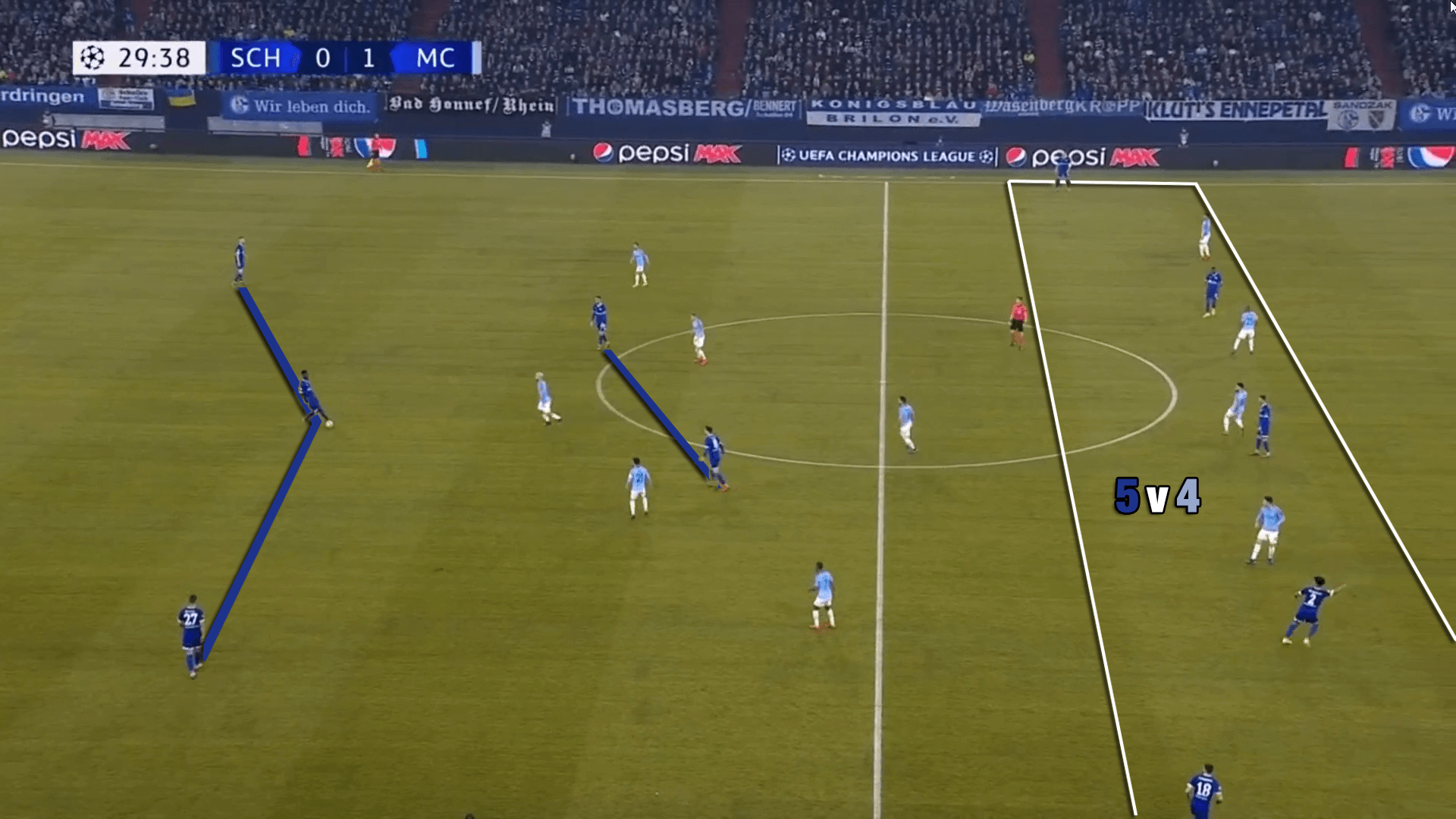
However, the build-up players rarely found a way to play passes to the attacking players. That was mainly because the latter group lacked staggering in their positioning. Due to the flat positioning of all five players, Schalke did not make use of the space between the lines which facilitated defending for the City back line.
In addition to that, ball losses in central areas left Schalke’s back three exposed during build-ups. Manchester City were able to score the opening goal after winning the ball in Schalke’s penalty area. Although centre-back Sané was likely to be pressed, goalkeeper Ralf Fährmann played a short pass to the Senegalese.
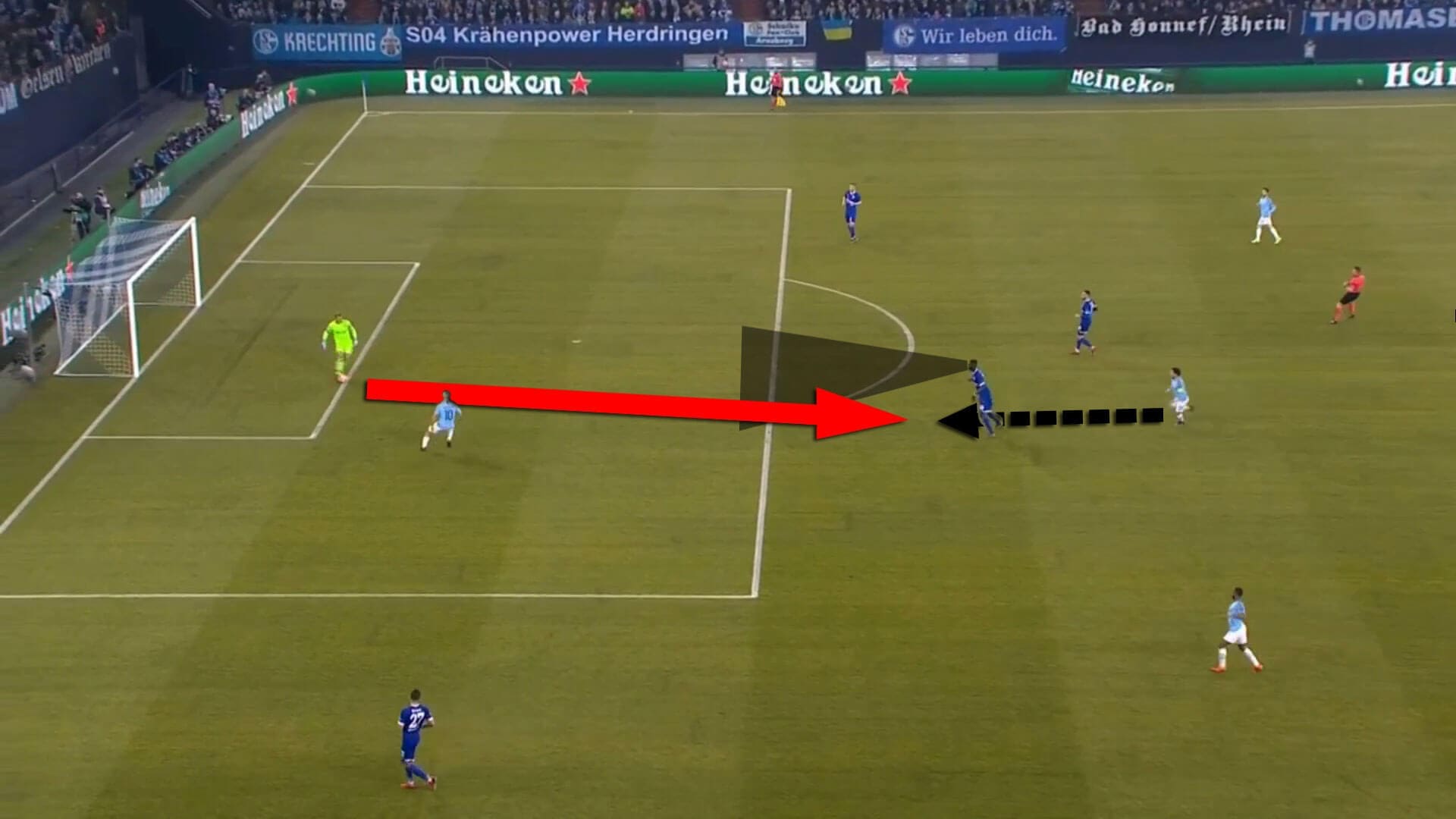
Since Sané lacked pre-orientation, Bernardo Silva could win the ball and assist striker Kun Agüero for the first goal of the game.
Dangerous counter-attacks to threaten Manchester City’s goal
Counter-attacking was the main offensive concept to create goalscoring chances for Schalke. Die Knappen utilised the pace of both wingers to quickly get behind the opposition midfield line when regaining the ball. Morever, central midfielders Nabil Bentaleb and Suat Serdar supported their team-mates during counter-attacks with offensive runs. Both midfielders are equipped with dribbling qualities, and were capable of carrying the ball into dangerous areas.
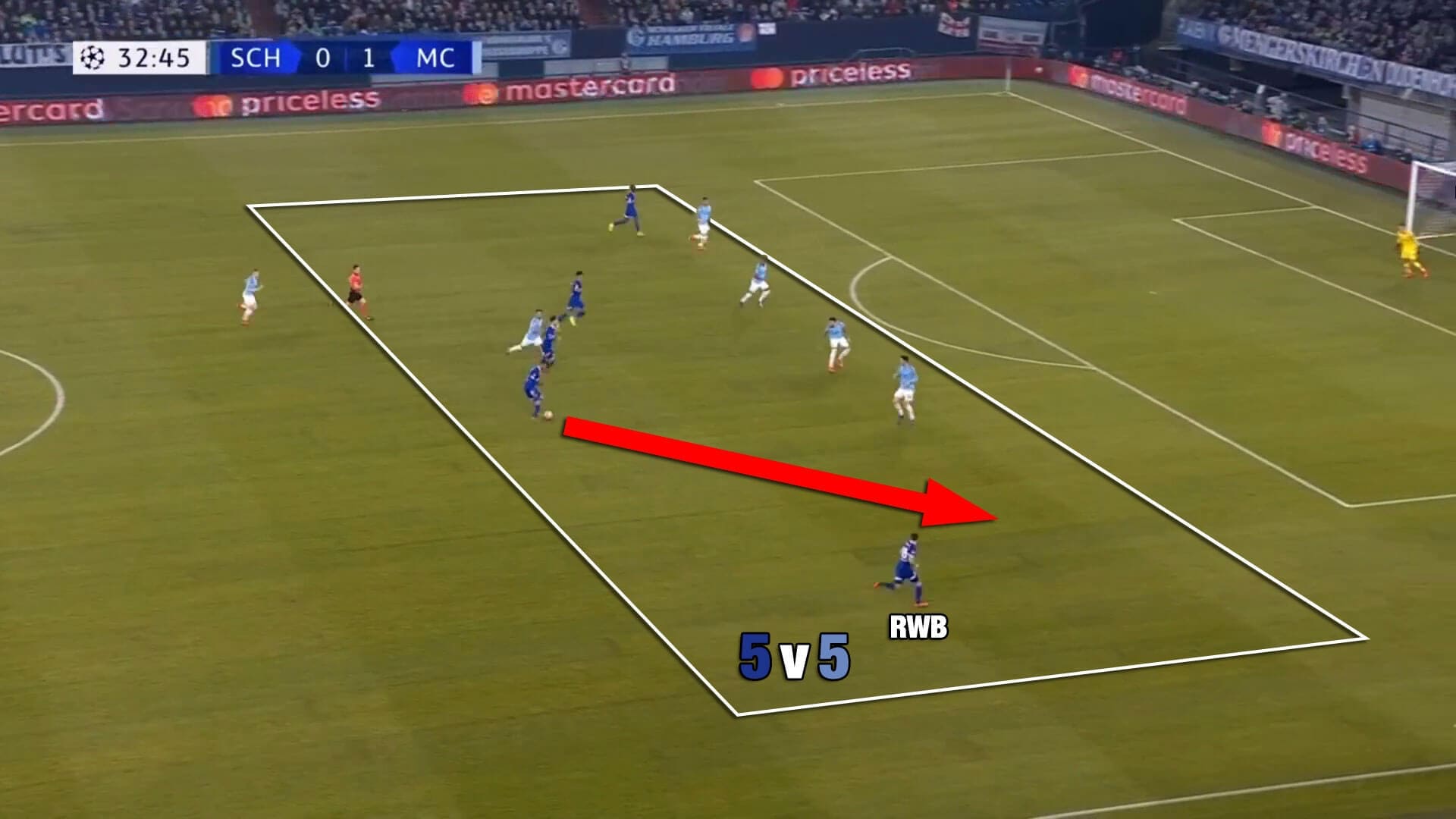
The counter-attacking philosophy was on full display when goalkeeper Ralf Fährmann saved a free-kick. The captain immediately hit a long ball into the opposition half to start a counter-attack. Although Schalke lost the ball in Manchester City’s half, Schalke were able to win back the ball due to a good organisation.
Schalke’s defence closed down all passing options and McKennie won back the ball. As Manchester City were still disorganised, Schalke finished the attack with a shot being blocked by Nicolás Otamendi’s arm. The Bundesliga team scored the equaliser from the resulting penalty.
Reactive approach despite numerical advantage
In another counter-attack, Nicolás Otamendi fouled substituted striker Guido Burgstaller and therefore was sent off with his second yellow card of the match. As a result, Schalke were superior in number. However, the Bundesliga side still focused on defending the lead instead of aiming at scoring their third goal.
Manchester City stuck to their possession-based philosophy leading to a possession rate of 66.5%. Schalke therefore had to chase the ball for another 25 minutes. As this required a lot of running, Schalke’s players got more and more tired. This might be a possible answer for why Tedesco’s side let the lead slip away.
The Bundesliga side were not capable of winning the important duels in the final stage of the game. Although Schalke won more tackles (22), the Schalke midfielders could only stop so much. This led to the free-kick from which former Schalke player Leroy Sané scored the equaliser.
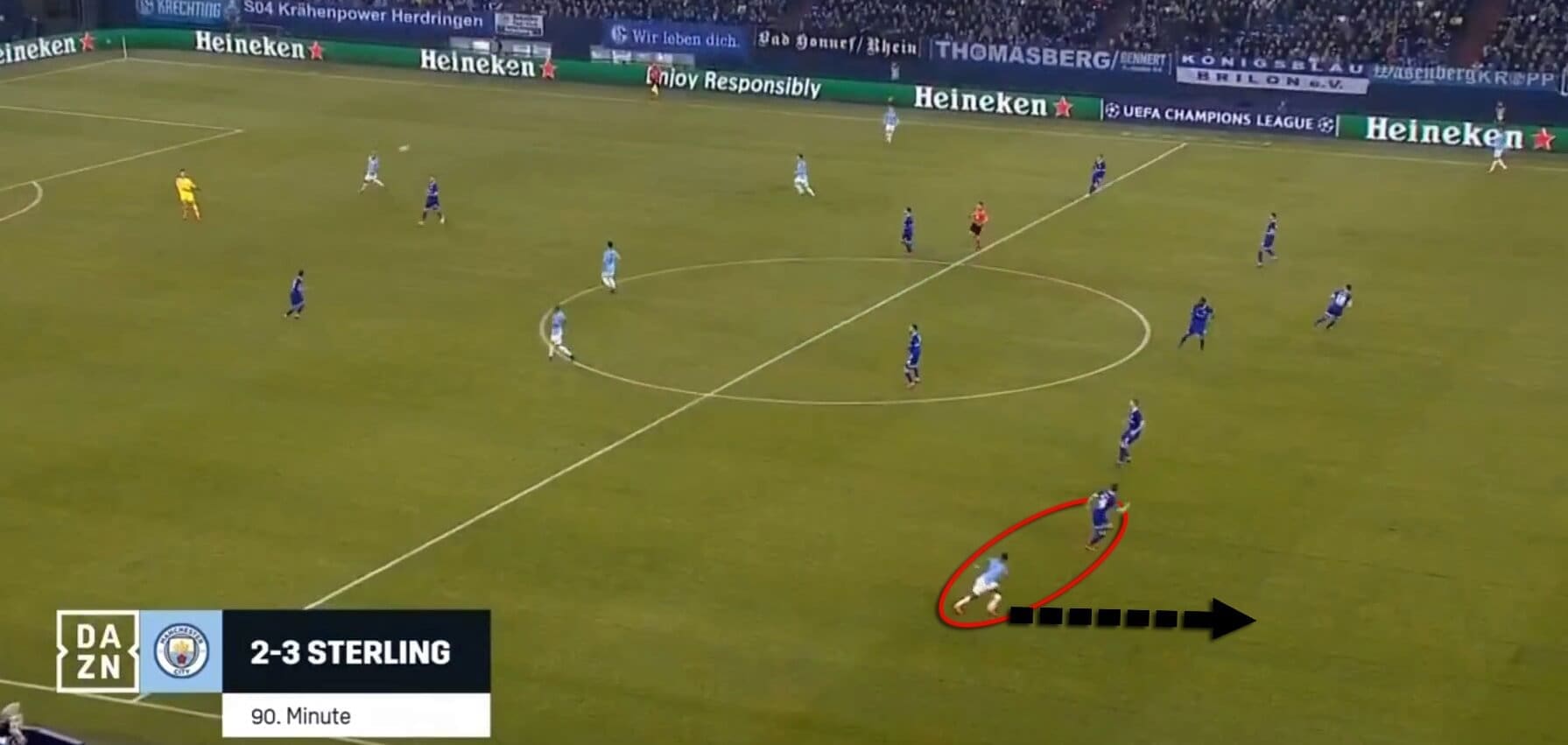
In the end, left wing-back Bastian Oczipka was not capable of stopping Sterling scoring the winner.
Conclusion
Schalke’s well structured defensive approach was a tough nut to crack for Manchester City. Through preventing the advanced midfielders from turning, the Schalke defenders kept Manchester City away from the goal. Nevertheless, Tedesco’s men lost important duels in the final stage which cost them the draw or even a win.
With regard to the second leg, Schalke will need to create more penetrating power up front. With an improved attacking structure and the same defensive discipline Schalke might have a very small chance of success. Nevertheless, Manchester City had a lot of potential for improvement, too.
If you love tactical analysis, then you’ll love the digital magazines from totalfootballanalysis.com – a guaranteed 100+ pages of pure tactical analysis covering topics from the Premier League, Serie A, La Liga, Bundesliga and many, many more. Buy your copy of the February issue for just ₤4.99 here, or even better sign up for a ₤50 annual membership (12 monthly issues plus the annual review) right here.

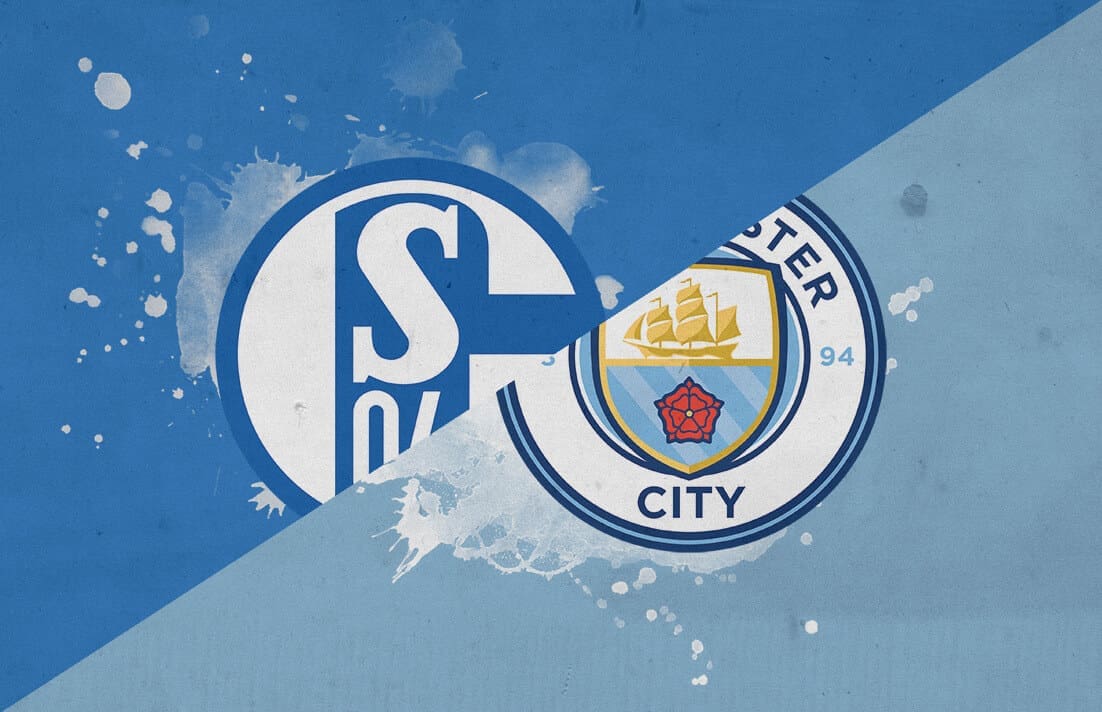



Comments